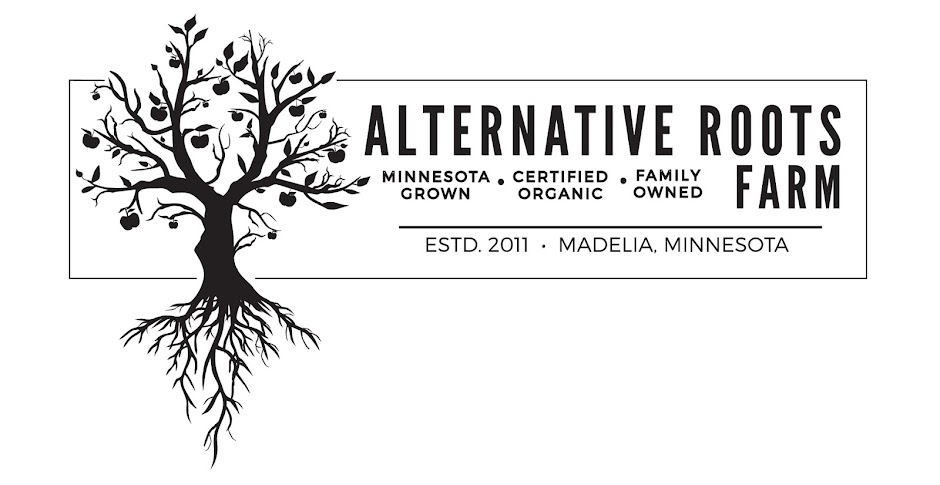Scroll through for a few recipes.
 |
| Peas germinating! |
Environmental Rockstar...
Peas are nitrogen "fixers", which means they can take nitrogen from the atmosphere and fix it into the soil, making it available to other plants. So they're good for you and good for the soil!
 |
| Snow peas on the vine. |
Origins...
There are thought to be four centers of origin, including Central Asia, the Near East, Abyssinia, and the Mediterranean. There is evidence of cultivation along the Thai-Burma border, dating back 12,000 years. Peas were introduced to the Americas soon after the arrival of Columbus.
 |
| Pea blossoms. |
Health Rockstar...
Peas are a good source of protein and fiber. They are rich in vitamin C, iron, thiamine, folate, phosphorous and potassium. They are also a source of omega-3 and -6, beta-carotene and vitamin E. Peas contain phytonutrients, which are antioxidant and anti-inflammatory.
 |
| Mammoth Melting snow peas. |
Pro Tips...
Use peas within 2-3 days for best flavor and maximum nutrients.The main season for peas is spring - early summer, so preserve their freshness by putting some in your freezer for pastas and stir frys all year around. Shell peas may be shucked and frozen. I like to freeze them on a sheet pan, before vacuum sealing them in bags. This is a great activity to do with the kiddos! Snap and snow peas should be blanched before freezing (if this is the only thing keeping you from doing it then skip the step and just use them within 6 months). Use frozen peas within 12 months.
Sauteed Sugar Snap Peas
Top and tail the sugar snap peas, pulling off the strings. Slice on the diagonal into ½-inch-thick pieces. Put into a saute pan with a ¼-inch of water, butter and a sprinkling of salt.
Cook until done, about 3 minutes. The water and butter should be emulsified and coat the snap peas, which should be bright green and just tender. Adjust the seasonings and serve—try curry or garlic, or whatever floats your boat.
*You can also toss other items in, such as your onions, kale, radishes, beet greens or spinach in, as well as garlic, garlic scapes and other goodies, such as Swiss chard or shallots.
[Main recipe from Chez Panisse Vegetables]
Sauteed Radishes and Sugar Snap Peas with Dill
Makes 6 servings • To remove strings from fresh peas, just snap off the stem end and pull string lengthwise down each pod.
•½ C thinly sliced shallots (or a onion + 1 clove garlic)
•1 T olive oil
•12 oz sugar snap peas, trimmed, strings removed
•1 T butter
•2 C thinly sliced radishes (about 1 large bunch)
•¼ C orange juice
•1 t dill seeds (omit if you don’t have any)
•1 T chopped fresh dill (or slightly less dried dill)
Melt butter with oil in a large non-stick skillet, over medium heat. Add shallots and sauté until golden, about 5 minutes. Add sugar snap peas, cook for one to two minutes, and radishes sauteing until crisp-tender, about 3 to 4 minutes more. Add orange juice and dill seeds; stir 1 minute. Season with salt and pepper. Stir in chopped dill. Transfer to a bowl; serve. Credit: Bon Appétit, April 2004
Braised Peas with Spring Onions and Lettuce
• 1 knob of butter
• olive oil
• 1 heaped t flour
• 1 C chicken or vegetable stock
• 6 spring onions, trimmed, outer leaves discarded, and finely sliced
• 14 oz fresh or frozen peas
• 2 little butter lettuces, sliced
• sea salt and freshly ground black pepper
• juice of 1 lemon *about 3 T
• extra virgin olive oil
Slowly heat the butter and a good glug of live oil in a pan. Add the flour and stir around, then slowly pour in the stock. Turn up the heat and add the spring onions, peas and lettuce with a pinch of alt and pepper. Put the lid on and simmer for 5 minutes or until tender. Taste, correct the seasoning and squeeze in a little lemon juice. Serve drizzled with a splash of good oil. It’s fantastic served with a piece of fish.
Credit: Cook with Jaime (Jaime Oliver)
Sesame Snow Peas
•1lb snow peas
•1/4 red bell pepper
•1-1/2 t sesame seeds
•2 t toasted sesame oil
Steam lease until bright & crisp-tender, 1-2 min. Cool under running cold water. Drain & dry. Toss with remaining ingredients.




















